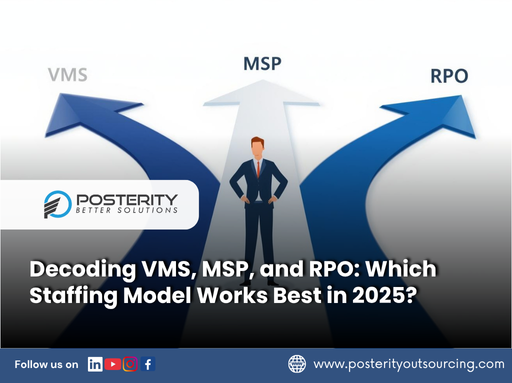Why Businesses Are Shifting from Permanent Hiring to Staff Augmentation
- Posterity Consulting
- Jul 14
- 2 min read

The talent landscape is undergoing a profound transformation. Where once businesses focused on building large, permanent teams, many are now turning to staff augmentation—a flexible workforce model that allows companies to bring in skilled professionals on a temporary or project-specific basis. But this isn't just a cost-saving maneuver or a reaction to global workforce disruptions. It's a strategic move toward agility, specialization, and efficiency.
What Is Staff Augmentation?
Staff Augmentation, also referred to as:
Contingent Workforce Staffing
Temporary Staffing
Flexible Resourcing
Project-Based Hiring
Contract-to-Hire or On-Demand Talent
...is a hiring approach where companies supplement their existing teams with external professionals—usually for a defined period or specific project. Unlike outsourcing (where entire functions are handed off), staff augmentation keeps control in-house, integrating external talent directly into internal workflows.
Why Businesses Are Making this Shift?
Faster Hiring Cycles and Scalability: The traditional hiring cycle—job posting, interviews, negotiations—takes time. In contrast, staff augmentation allows for rapid onboarding, often in days. This is crucial in industries with tight deadlines or sudden scale-up needs.
Access to Specialized Skills: Whether it’s AI, blockchain, cybersecurity, or DevOps, modern business needs are often highly specialized. Hiring these experts permanently doesn’t always make sense. With augmentation, companies can bring in talent for specific tasks without overcommitting.
Lower Long-Term Commitment: Companies reduce overheads by avoiding permanent benefits, severance packages, and long-term liabilities. This reduces financial risk while maintaining work quality.
Lower Risk and Greater Control: Permanent hiring comes with long-term risks: performance uncertainty, changing project scopes, and employee turnover, to name a few. With staff augmentation, companies can engage talent with minimal risk—if needs change or goals shift, the team composition can adapt without the complications of layoffs or internal restructuring.
Focus on Core Business Objectives: A growing number of organizations are choosing to reserve their permanent teams for core strategic work, while relying on augmented staff for execution-heavy or highly technical roles. This ensures that internal employees remain focused on innovation, leadership, and long-term goals.
The Future of Staff Augmentation
Hybrid Workforce Models Will Dominate More companies will adopt a hybrid model—a core team of permanent employees supported by a rotating pool of on-demand experts. This balance offers stability with flexibility.
Rise of AI-Powered Staffing Platforms Technology is making staff augmentation smarter and faster. AI tools now help match freelancers and contractors to companies based on skill, availability, and cultural fit.
Global Talent Pools As remote work becomes the norm, geographic barriers are falling. Companies can now access global talent, expanding the potential of staff augmentation significantly.
Shift Toward Outcome-Based Hiring Companies will focus less on "hours worked" and more on deliverables and project outcomes, aligning perfectly with the staff augmentation model.
Final Thoughts
Staff augmentation is no longer a short-term fix—it’s a long-term strategic workforce solution. It enables companies to adapt to market demands, plug skill gaps, and innovate faster without carrying the weight of permanent hiring. As businesses navigate an increasingly complex and fast-moving landscape, the ability to quickly access and integrate talent will be a defining competitive edge. Staff augmentation is not just the future of hiring—it’s the future of work





Comments